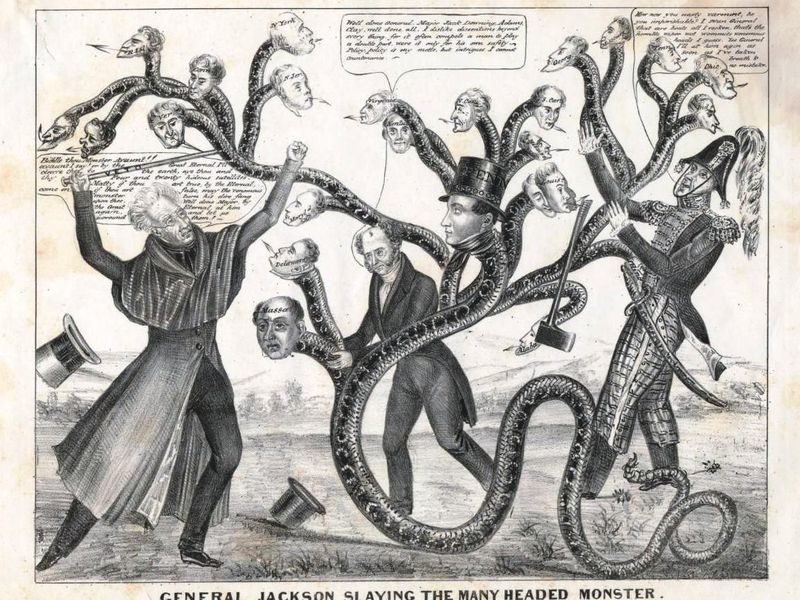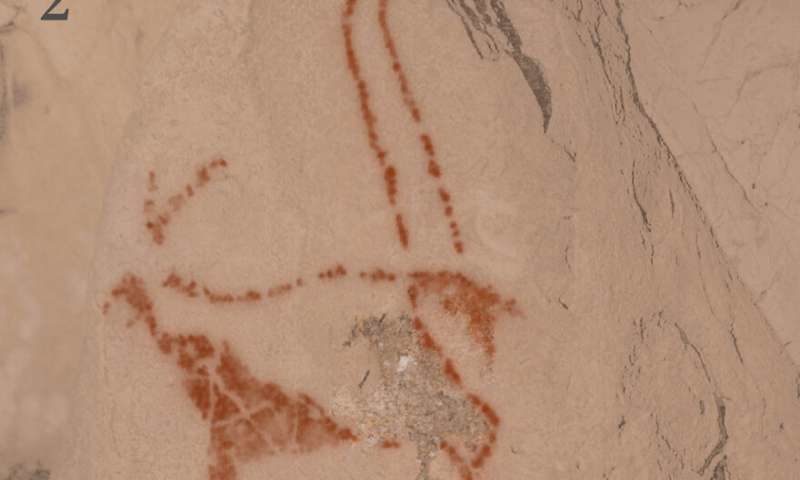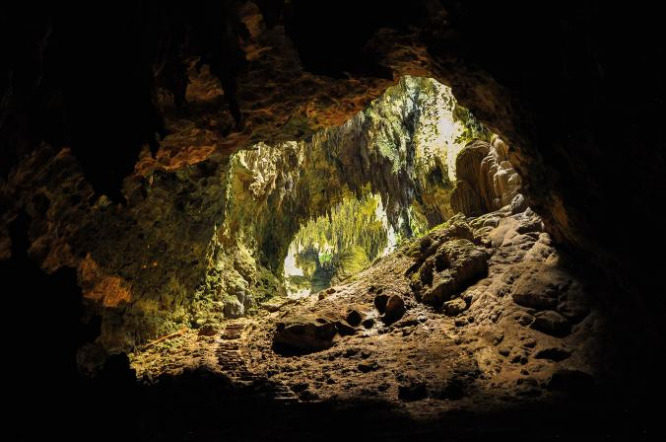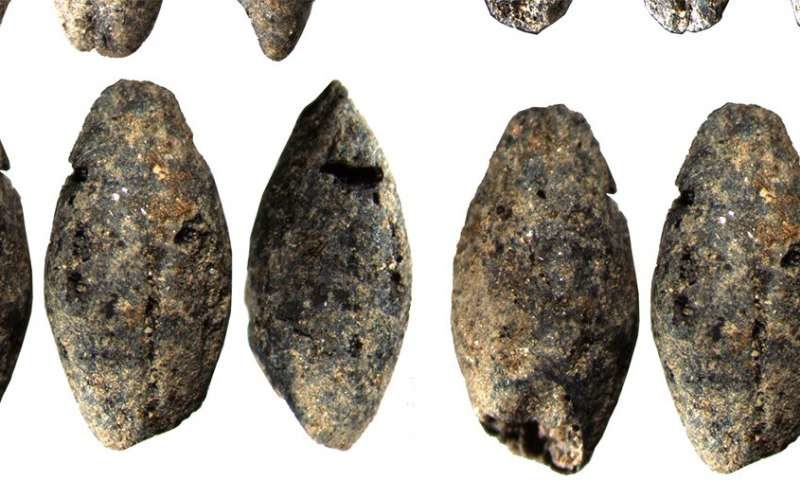
© A. Cressler; Antiquity Publications LtdStudy researchers Beau Duke Carroll and Julie Reed examine Manitou Cave in Alabama, whose walls bear Cherokee syllabary that's has nearly 200 years old.
Nearly 200 years ago, Cherokee gathered inside a cave in Alabama and, using their newly minted alphabet, wrote ceremonial messages onto the walls and ceiling, a new study finds. The writings included accounts of Cherokee ancestors and stickball, the predecessor of lacrosse.
Some of the religious messages were written backward, possibly so that spirits in this cave - which the Cherokee might have viewed as a portal to the spirit world - could read them, the researchers said.Modern researchers have known about these writings since explorers found the markings in Manitou Cave in 2006, but now a group of archaeologists, including those from the three federally recognized Cherokee tribes, have worked together to translate the messages.
It's rare to discover historical cave writings in a tribe's own alphabet, said the study's lead archaeologist, Jan Simek, distinguished professor of anthropology and president emeritus at the University of Tennessee, Knoxville.
"Here, we had Native American use of caves and Native American decoration of the walls of caves, but [in writing] that we could read," Simek told Live Science. "We could hear in their own voice what they were doing."
The messages are written in Cherokee syllabary, (a syllabary is a set of written characters that represents syllables in a spoken language), a writing system for the Cherokee language that a Cherokee man named Sequoyah invented in the early 1800s. At the time, Sequoyah lived in Willstown (now Fort Payne, Alabama), a large refugee community of Cherokees who had fled their farming and hunting homeland that straddled the Appalachian Mountains in parts of Georgia, South Carolina, North Carolina and Tennessee after Euro-Americans began taking over that region, Simek said.













Comment: The definition of conspiracy, according to Wiki, is as follows: Politically literate citizens judging much of what goes on in Western politics today, perhaps as a culmination of that which began centuries ago, know that vast conspiracies have been in play, and are evidently afoot (although to place the blame at the feet solely of the Masons would be naive), and so in our highly propagandized times the necessity for people to discern truth from lies has never been more important: